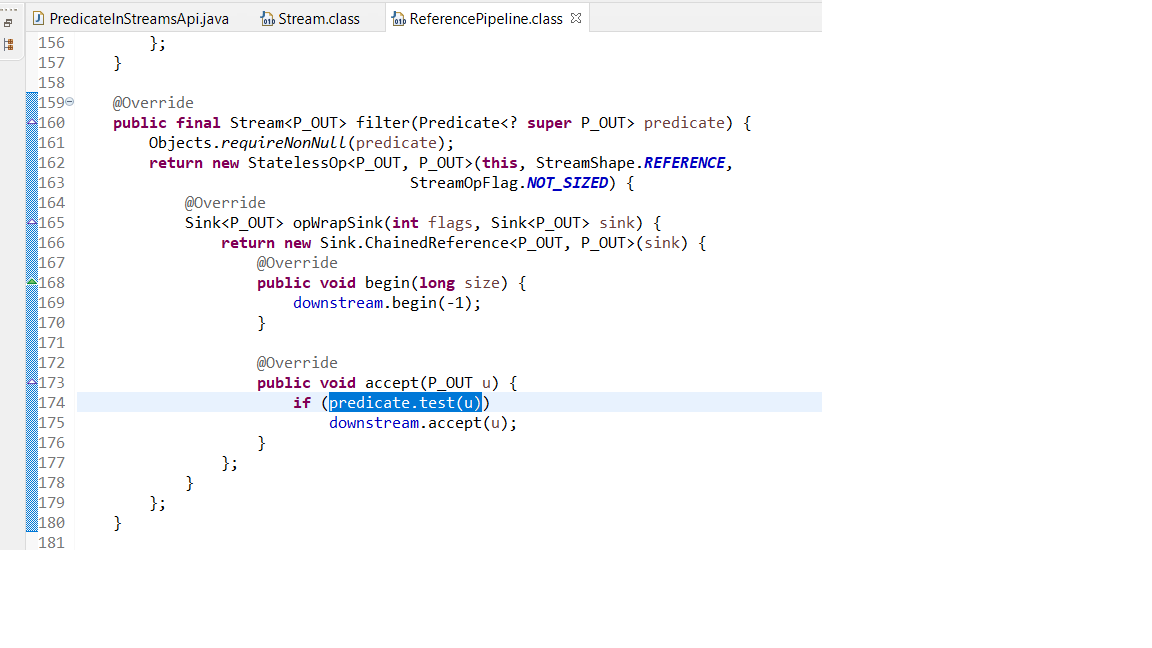
Predicate Interface Java 8 Computer Science java
Java 8 Predicate with Examples. Read. Practice. A Functional Interface is an Interface which allows only one Abstract method within the Interface scope. There are some predefined functional interface in Java like Predicate, consumer, supplier etc. The return type of a Lambda function (introduced in JDK 1.8) is a also functional interface.

Java 8 Consumer , Supplier & Predicate Interface With Example Java Techie YouTube
Next, if we don't want to build a complex Predicate using bitwise operations, Java 8 Predicate has useful methods that we can use to combine Predicates. We'll combine Predicates using the methods Predicate.and() , Predicate.or() , and Predicate.negate().
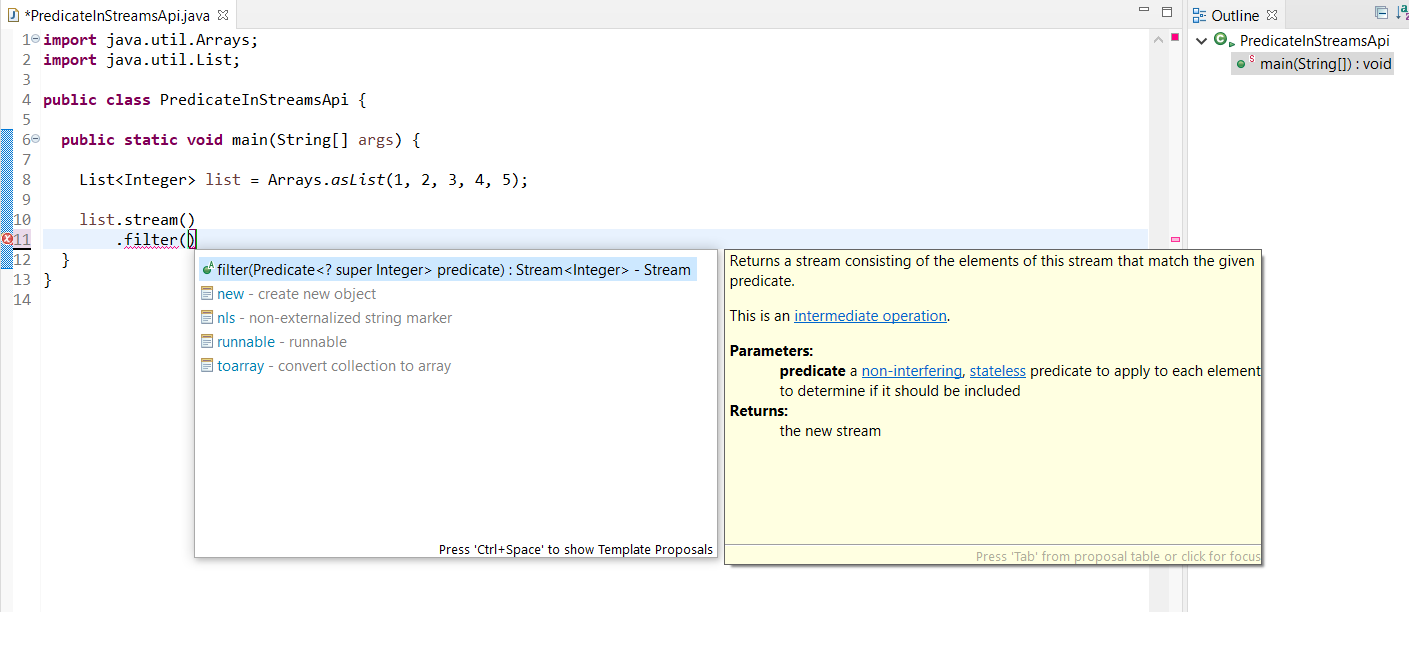
Predicate Interface Java 8 Computer Science java
Java Predicates have a functional (abstract) method test (Object) that evaluates this predicate on a given Object. Here's an example of writing a simple Predicate that filters integers based on conditions "greater than", "lesser than". The output will be true because 10 < 18. One more example with Predicate in filter ().

Predicate in Java 8 With Examples TechBlogStation
Let's see some more Java 8 Predicate examples. 1. Employee Filtering: Suppose you have a list of employees and you want to filter out employees who earn more than a certain salary threshold. import java.util.List; import java.util.function.Predicate; public class EmployeeFilterExample { public static void main (String [] args) { List In Java, a predicate is a functional interface that represents a boolean-valued function of an input argument. The predicate interface is part of the java.util.function package and has a single method called test().. The test() method takes an argument of a certain type and returns a boolean value. It can be used to perform a test on the input argument and return a true or false value based on. A predicate is an inline implementation of the functional interface java.util.function.Predicate The Predicate interface is part of Java 8 functional programming enhancements.A Predicate is a functional interface and can therefore be used as the assignment target for a lambda expression or method reference.. Implementation-wise, a Predicate is used to pass the behavior (functions) as arguments to methods. In simple words, a Predicate is essentially a boolean-valued function that takes an. Java Predicate. Predicates in Java are implemented with interfaces. Predicate Java Predicate Interface. It is a functional interface which represents a predicate (boolean-valued function) of one argument. It is defined in the java.util.function package and contains test() a functional method. The java.util.function.Predicate interface contains one abstract method, test(), which takes an object and returns a boolean. @FunctionalInterface public interface Predicate Interface Predicate It seems that what you want is not to store a predicate in a Map. What you want is to be able to store something in a map that is able to create a Predicate A quick practical guide to Java 8 Predicate Functional Interface with Examples. This is desinged to test the condition. This has a function method test(T t).. Now, We want to add an additional test condition to the existing predicate that name starts with "p". and() method is used to club two predicates and produces a boolean result.. The java.util.function package, employs Predicates to cover the cases where logical tests are to be applied, generically. In general, predicates are used to test something, and return a true or false value according to that test. The predefined functional interface has the structure structure, albeit, accepts a generic parameter: public. Predicates in Java are implemented with interfaces. Predicate In Java 8, Predicate is a functional interface, which accepts an argument and returns a boolean. Usually, it used to apply in a filter for a collection of objects. @FunctionalInterface public interface Predicate
160 Java 8 Predicate with Examples Java 8 Predicate Examples Predicate java 8
Tech Trek A Software Engineer's Guide to Code and Beyond Predicates and BiPredicate Functional

Java 8 Predicate Examples Conditions in JDK 8
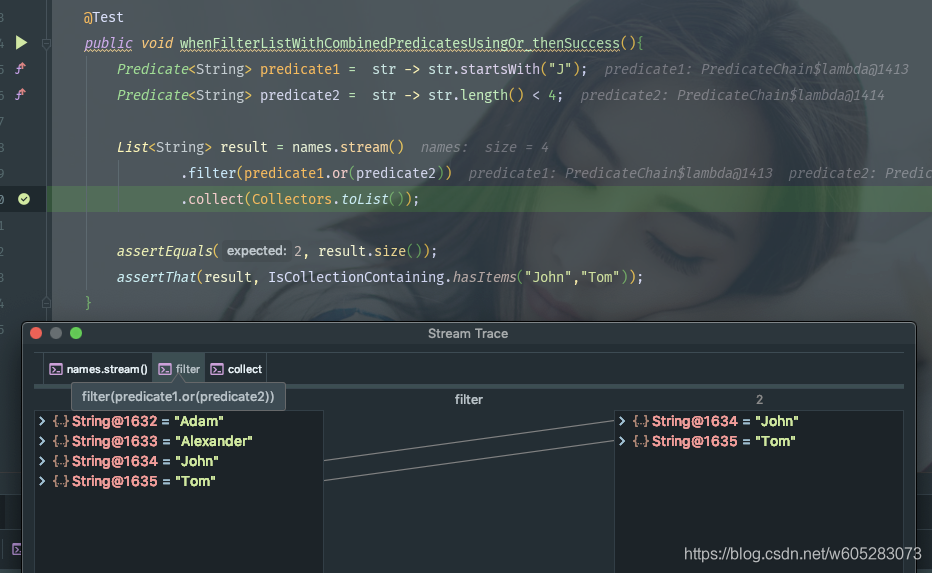
Java 8 Predicate花样用法_predicate CSDN博客

Java 8 Tutorial 07 Predicate in java 8 Predicate Functional Interface in java 8 YouTube
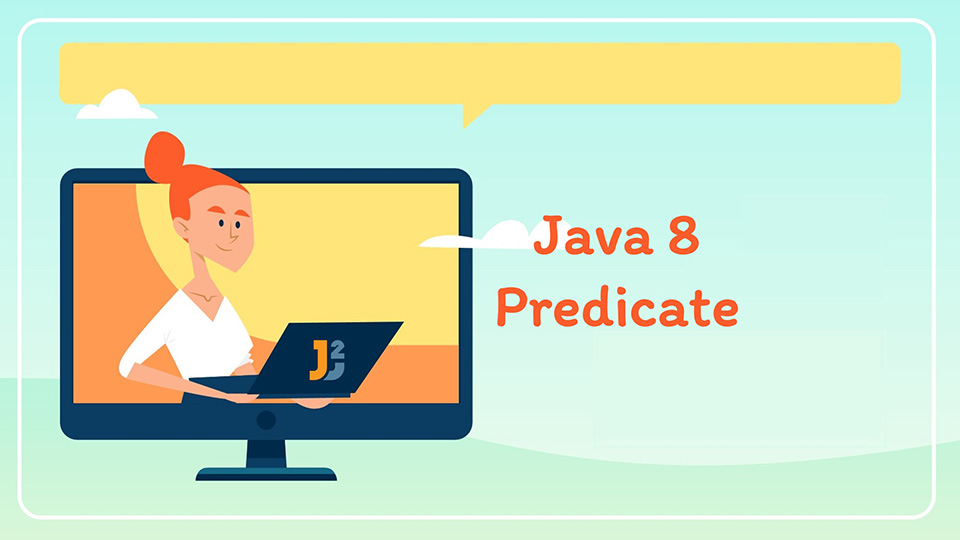
Java 8 Predicate example Java2Blog
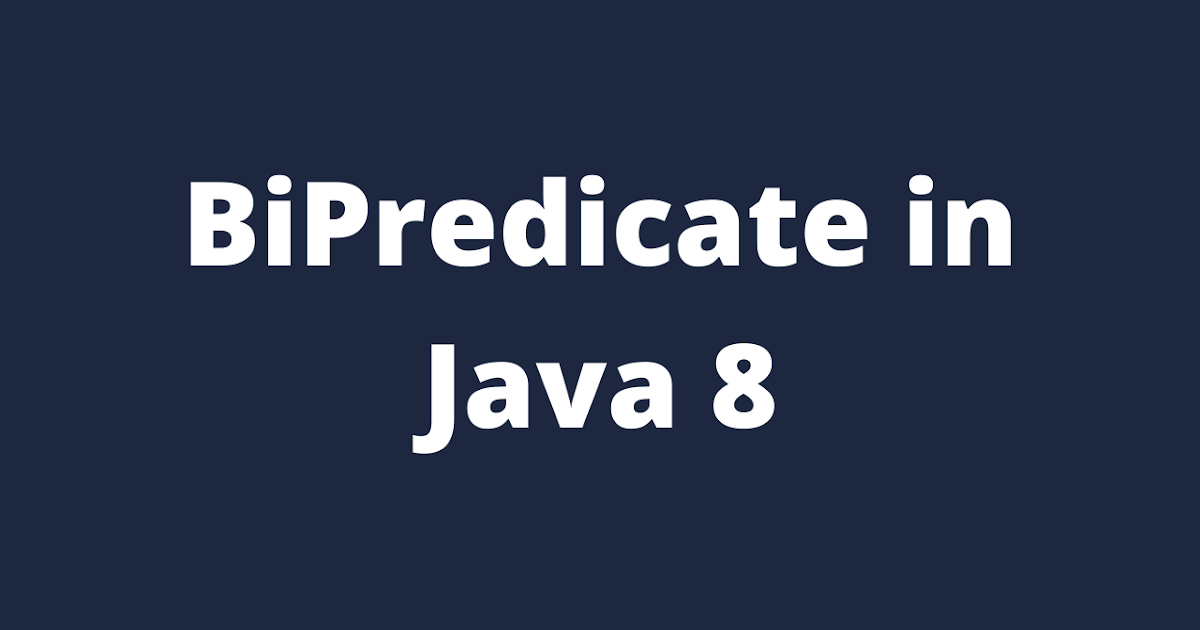
BiPredicate in Java 8 with examples test(), and(), or() and negate() methods

Java 8 Features Part 14 Passing Predicate To A Method YouTube

How to use Predicate with Collection

Predicate In Java 8 with examples test(), and(), or(), negate() methods

Simplify Your Code with Java Predicate A Comprehensive Guide YouTube

Java 8 Features Part 15 Predicate Joining YouTube